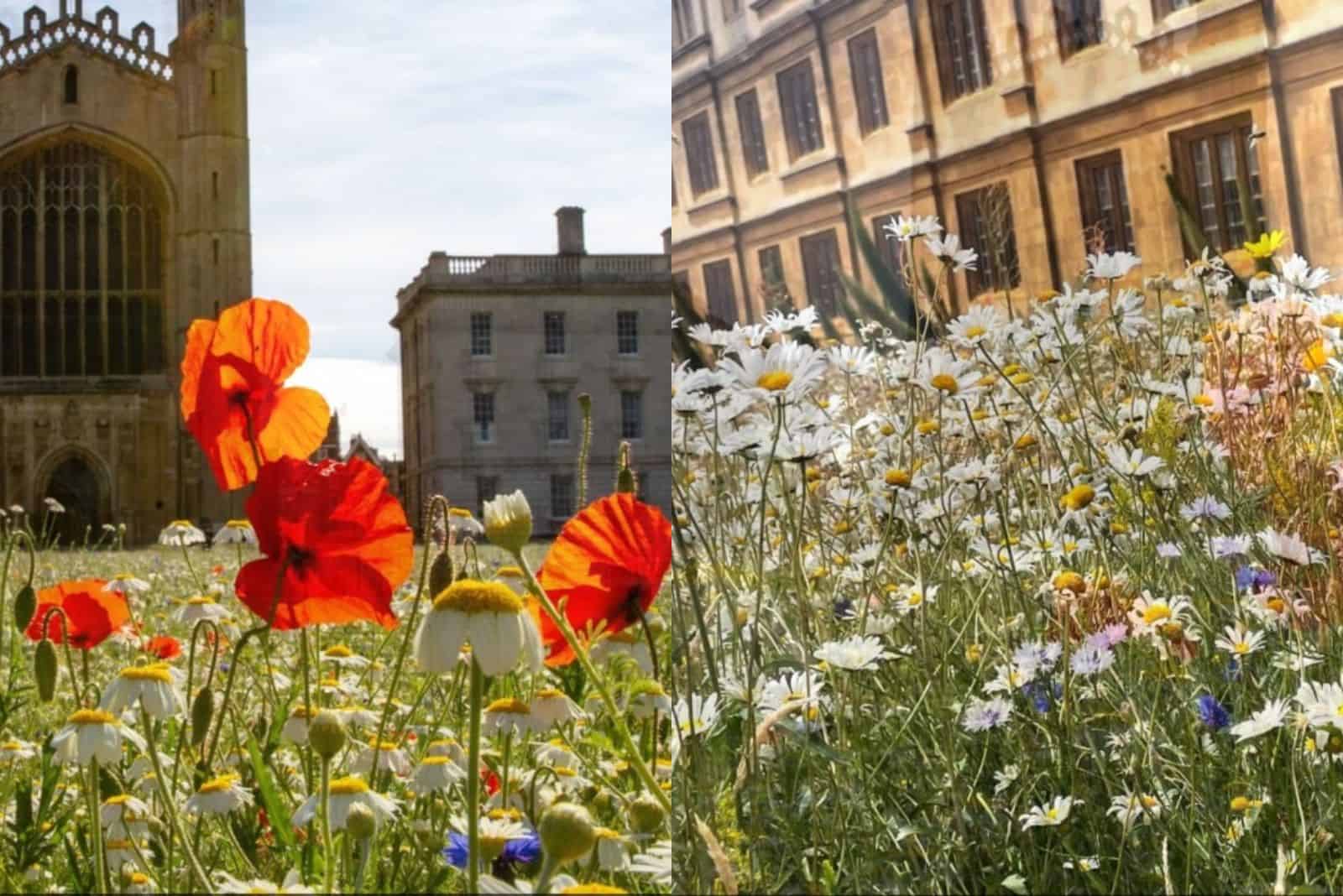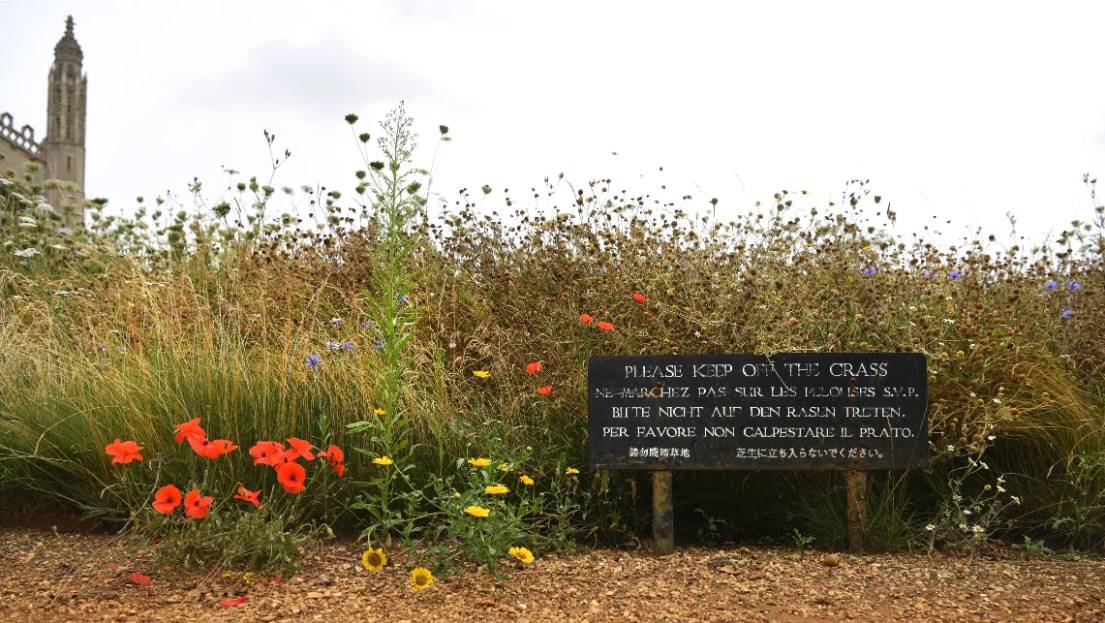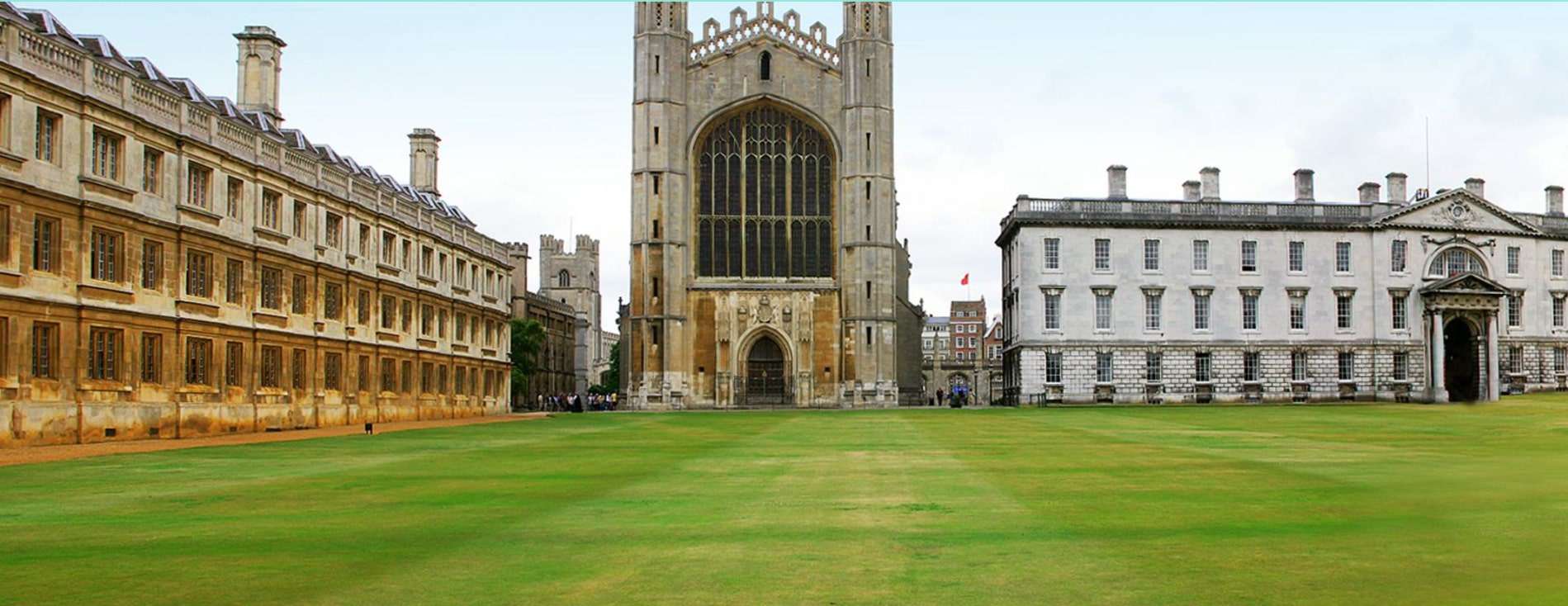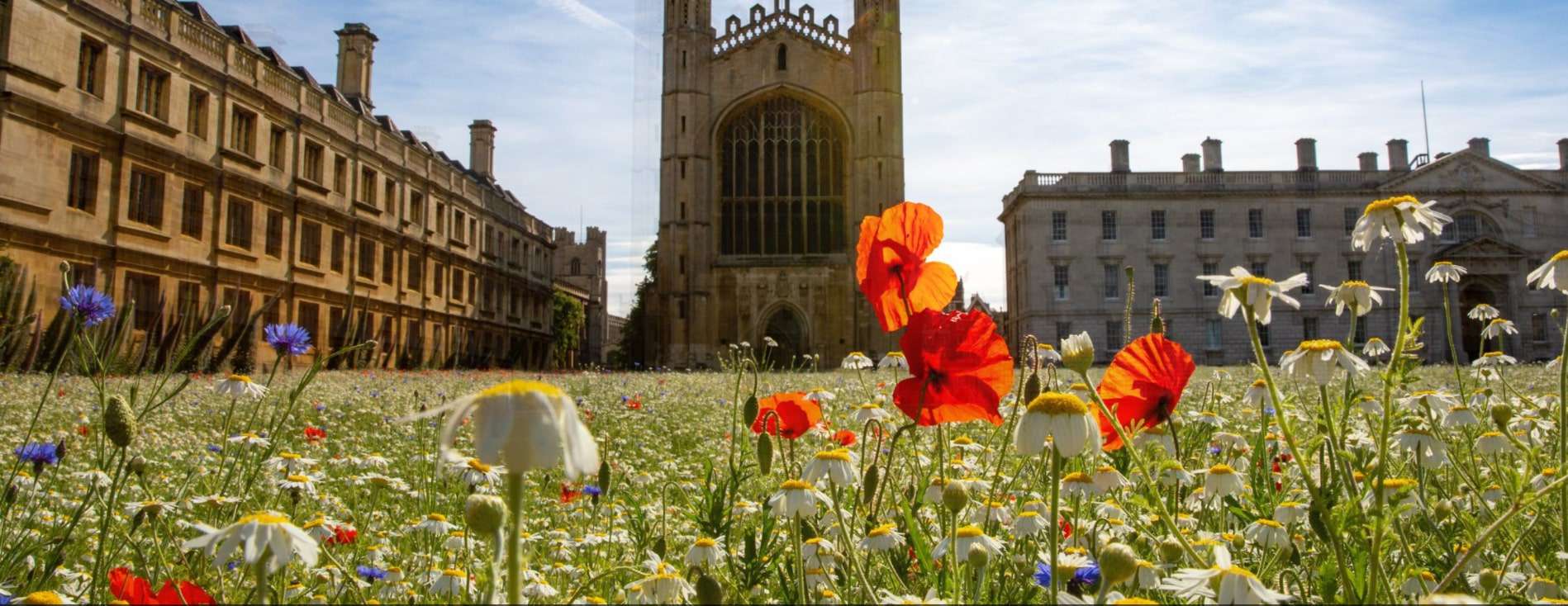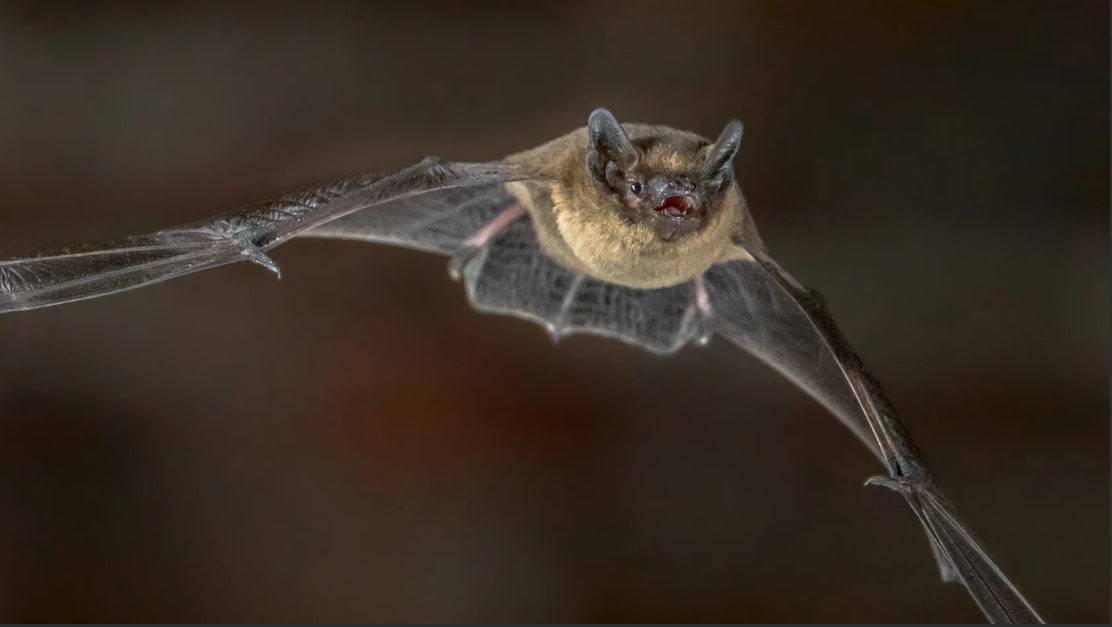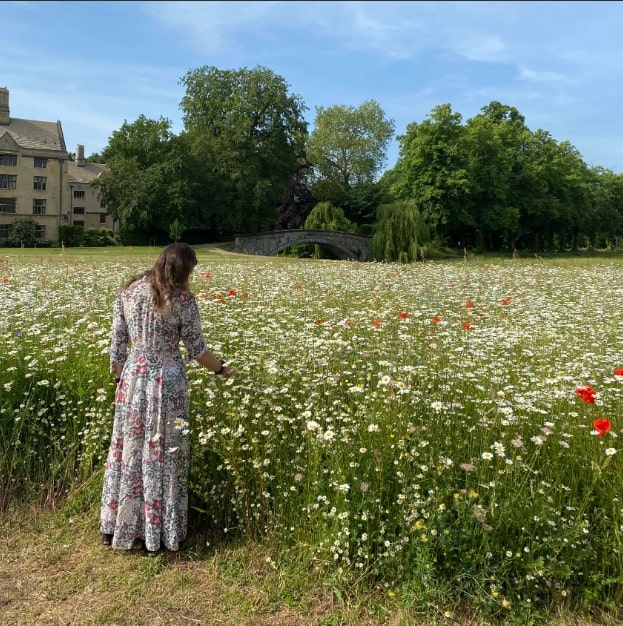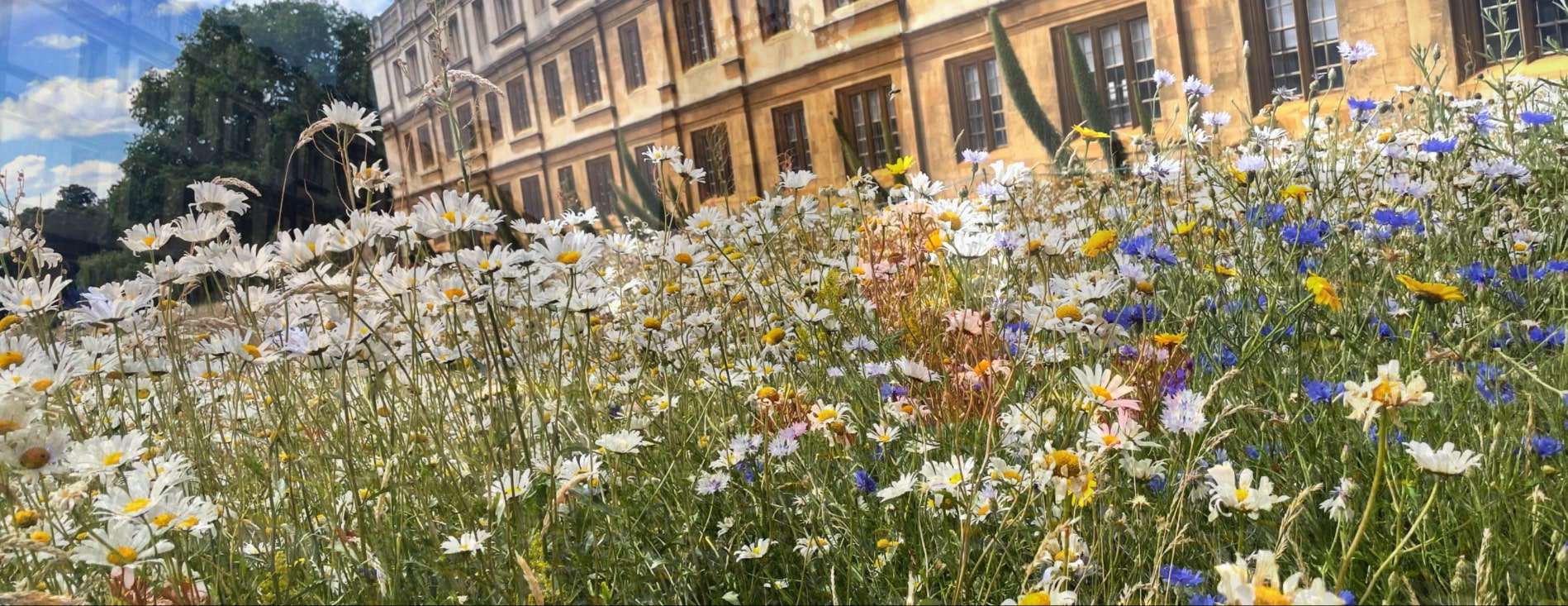Did you know that you can encourage biodiversity and promote a “greener” lawn by replacing traditional grasses with wildflowers?
Maintaining classic lawns is a century-old custom in most Western countries. They’re great for sports, but they do not create healthy ecosystems.
Additionally, tending to traditional lawns is expensive, time-consuming, and much worse than letting nature take its course.
And when it does, the result is awe-inspiring.
In autumn 2019, King’s College Cambridge sowed a wildflower meadow in place of a portion of the Back Lawn, claim researchers led by the University of Cambridge.
They decided to prove that nature does wonderful things and broke the tradition by not mowing the Back Lawn for the first time since 1772.
This clean patch of grass quickly became a wildflower meadow filled with poppies, cornflowers, and oxeye daisies. It exploded with life!
The meadow had a significantly higher number of plant species, spiders, bugs, and other invertebrates compared to the well-maintained lawn.
Additionally, urban areas have endemic species and can encourage biodiversity, but we have to preserve its vegetation. (1)
As a matter of fact, the total number of invertebrates was 25 times higher in the wildflower meadow than the previous well-maintained lawn.
Researchers claimed the meadow supported approximately four times as many declining plant species, followed by bugs and their predators – bats. They started foraging in the new field three times as often.
I was really surprised, actually, at the magnitude of the change for such a small area, remarked plant ecologist, botanist, and conservationist Cicely Marshall from the University of Cambridge.
She goes on to add how incredible it is that such a small meadow attracts bats that look for insects over several miles in a single evening.
The research recorded 84 plant species, only 33 of which were intentionally sown.
And the best part is that this richness doesn’t come with a cost. No gardener needs to mow, fertilize, water, or treat the meadow with pesticides. Nature does all that on its own.
Therefore, including lawn grass alternatives in your landscape will reduce your chores and still give you a space to admire.
This meadow has another benefit. Gardens can store carbon and reduce overall emissions into the atmosphere, unlike lawns. (2)
For instance, golf courses and other lawns require frequent mowing and fertilization, which increases energy consumption and emission of greenhouse gasses. (3)
The Cambridge research claims that meadows and their low-maintenance requirements can save 1.36 tons of carbon emissions per hectare within a year.
That’s the same amount of emissions produced by a return flight from New York to London. And bear in mind that this was done on a small patch of land.
Other research showed that even tiny or mini-meadows can increase biodiversity and attract numerous pollinators to gardens. (4)
Cambridge horticulturist Steven Coghill says that many people mow their lawns because that’s what they’ve always done since a close-mown lawn demonstrates you’re caring for the garden more.
And yet, moving away from this tradition and rewilding your garden could be a more loving act towards nature. It encourages biodiversity and helps ecosystems recover, which is especially important for deforested regions.
Many students interviewed for the research claimed that they liked this look much better than the traditional lawn, which they described as sterile, pretentious, off-putting, and self-defeating.
Of course, there were also those that love to be able to sit on grass, picnic with friends, kick a football with children, and some that even prefer the lawn aesthetic over the wild meadow look.
However, home gardens and lawns provide an opportunity to improve biodiversity that might not be feasible for golf and football courses.
Additionally, wildflower meadows could reflect sunlight more, potentially contributing to a cooler urban microclimate under future global warming.
King’s College is a great example and role model because of its long history and tradition. By taking the first step towards wildflower meadows, others can be inspired to follow suit.
The study was originally published in Ecological Solutions and Evidence.
References:
1. Aronson, M. F. J. et al. (2014). A Global Analysis of the Impacts of Urbanization on Bird and Plant Diversity Reveals Key Anthropogenic Drivers. Proceedings of the Royal Society B: Biological Sciences.
2. Zeldovich, L. (2019). Five Steps to Making Your Garden a Carbon Sink. jStor Daily: Science and Technology.
3. Tidåker, P., Wesström, T., Kätterer, T. (2017). Energy Use and Greenhouse Gas Emissions from Turf Management of Two Swedish Golf Courses. Urban Forestry & Urban Greening. 4. Griffiths-Lee, J., Nicholls, E., Goulson, D. (2022). Sown Mini-Meadows Increase Pollinator Diversity in Gardens. Journal of Insect Conservation.

